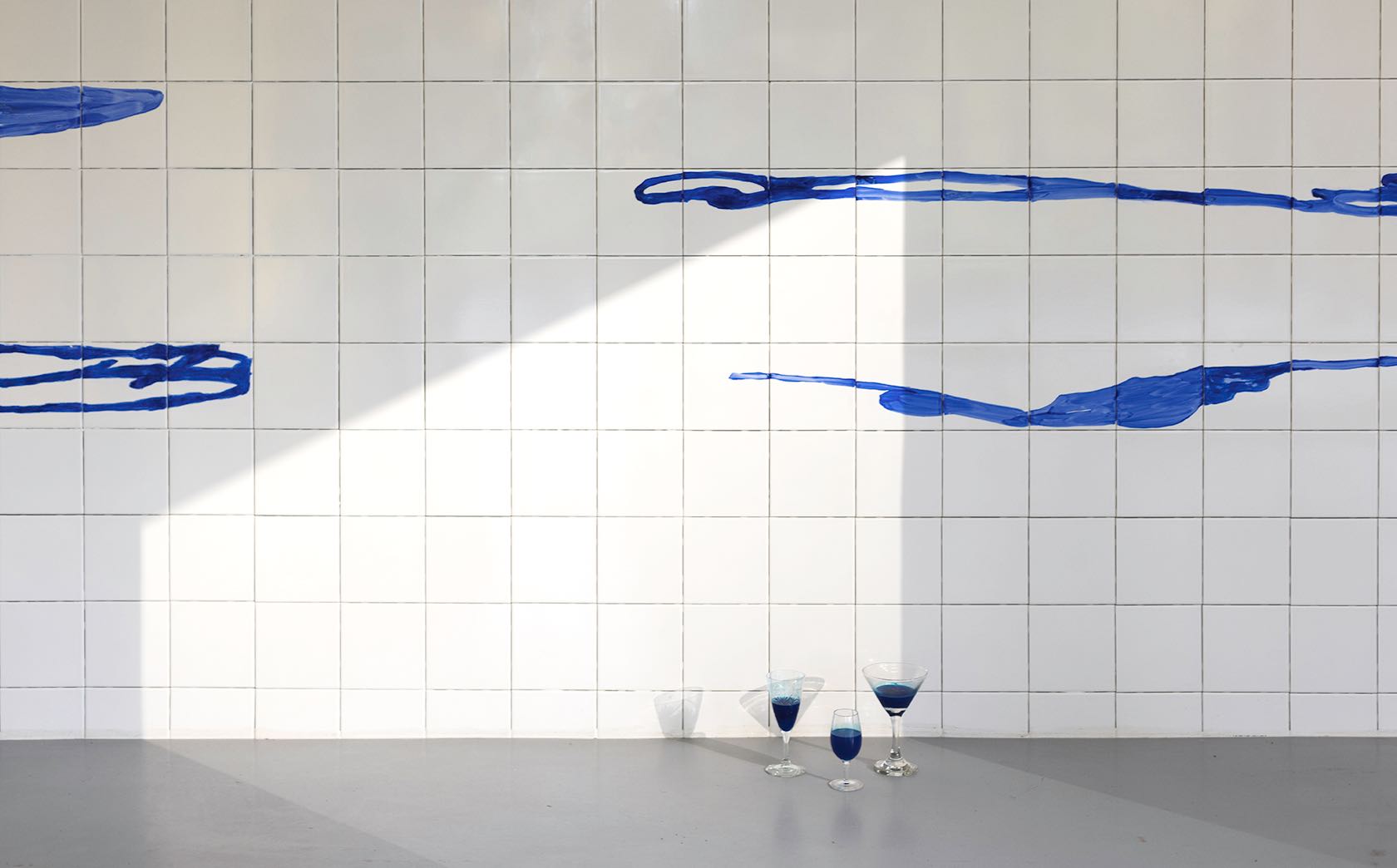
Niños Héroes
Traducción Simultánea
Exhibition
-> Feb 6 2023 – Apr 21 2023
AGO Projects
AGO Projects presents the exhibition by Niños Héroes.
One of the best-known patriotic myths in Mexico is the story of the Niños Héroes, or Child Heroes, a group of six young soldiers who, cornered in the high keep of the Castillo Chapultepec, threw themselves upon invading American forces, sacrificing their young lives for a newly independent nation. It’s a gruesome (and at least partially apocryphal) tale with countless variants: Had they been locked into the Castillo as punishment? Were they caught drunk and unawares? Did Juan Escutia, who lends his name to a major thoroughfare in the Colonia Condesa, really throw himself from the Castle’s parapet wrapped in the nation’s flag to keep it out of enemy hands, or was this legendary act of histrionic valor the result of an unfortunate slip and catastrophic fall? Did they even exist? Does it matter?
For the three designers behind the Mexico City- and Madrid-based creative studio Niños Héroes—the architect and artist Luis Úrculo; his cousin Nuria, who previously worked in publishing; and his partner, Gabriel Romero, a former producer in the fashion industry—the disjunction between history and legend is precisely the point. Through their wide-ranging and often whimsical body of work, which traverses the fields of art, industrial design, events and installations, they’ve thumbed their noses at the calcified cultural hierarchies that privilege the stability of fact over the joy of fable, the permanence of a stone temple over the ephemerality of a thatch-roofed hut, the laborious composition of a monumental canvas over the intuitive spontaneity of a sketch. In their first ever design exhibition, aptly titled and produced under the creative direction of Luis Úrculo, they add to those concerns a different, but connected, question: What happens when stories—or, for that matter, objects—are repeated and transformed through time, and is the end result, denatured and destabilized, worth less than the original?
Conceived in the tradition of Mies van der Rohe and Lilly Reich’s iconic 1929 German Pavilion, erected and disassembled in the span of a few months for the Barcelona International Exhibition, Traduccion Simultanea looks askew at the sacred cows of modern design and with deep appreciation on the material ephemera of domestic life. Rather than using Mies and Reich’s onyx and marble to clad the gallery walls of AGO Projects—an immersive design space as disinclined toward piety as the creators who show there—they use industrial white tiles that call to mind a public bathroom in some lost government building in Brasilia; the cobalt-blue sketches painted across the otherwise anodyne surface might have been dashed off by Athos Bulcão or Roberto Burle-Marx to meet the deadline of the Brazilian capital’s 1960 inauguration.
The piñata-shaped bases of stone-topped side table defy the laws of physics—how, after all, can a papier-mâché head, made to explode with a shower of candy, support slabs of volcanic stone? (The heads, as it turns out, are hand-sculpted from a mixture of resin, clay and TKMATERIAL: a sleight-of-hand that pulls millenary craft into the show’s irreverent discursive orbit.) A chair fashioned from thick planks of glass, its ragged edges like those of a hastily assembled cardboard model, seems inclined to tip over at the slightest provocation; settling into its transparent seat is something like the opposite of sitting too fast in a sturdy farmhouse chair only to be heaved sideways by uneven, time-worn legs. For another chair, made in collaboration with the Barcelona-based architecture firm MAIO, the designers soften a steel grid frame with cushions and sheepskin tossed on in apparent disarray, an homage to the festive and transitory nests of coats at winter house parties.
All of these objects represent—as the exhibition title states—Simultaneous Translations, though the name in English is, of course, much too literal. Here, you won’t see a prototype for a flimsy plywood chair remade in a different material. Instead, it’s scaled up and transubstantiated, its essential, Platonic chairness called into question even as it maintains its functionality. You won’t see the cords of lights that hang in shops around Mexico City’s historic center recast in a more ‘dignified’ material. Here, they’re tangled up and strung from the ceiling, a cheeky take on a chandelier. Copper masks like steampunk deities become wall sconces, their eyes and mouths brought to ghoulish life with the flick of a switch and squiggles jotted down in a fit of either frustration or inspiration are cast in metal and raised on spindly, arachnid legs, transformed—and why not?—into tables.
Taken together, these objects are a whimsical, gleeful jibe at the pieties of contemporary design: shibboleths shouted out loud instead of whispered, totems cut down to size. Children, heroes or otherwise, aren’t born with an instinct for monumentality and they don’t distinguish between masterpieces and toys. They do know how to play.
About Niños Héroes
Niños Héroes is a creative and design studio based between Mexico City and Madrid - the three founders are Luis Úrculo, Nuria Úculo, and Gabriel Romano.
The studio works as an investigation platform to develop projects in multiple formats and natures, to question the limits of design practice, trying to sample processes from other disciplines. In this case - under the creative direction of Luis Úculo, AGO Projects is doing/launching the first design exhibition from Niños Héroes where they have created collectible design pieces.
Therefore, the projects are open dialogues with clients, shaped by their own personal graphic language and with echoes from a distant architecture practice. Past clients have included Camper, Zara, Saffron, IKEA, Space 10, Phillippe Stark. They have also collaborated with the renowned Spanish architecture practice MAIO architects.
— AGO Projects